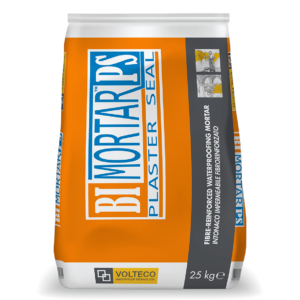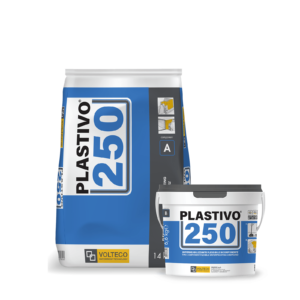
It has been estimated that the cost of waterproofing a building (in the case of new buildings) is worth on average 2-3% of the total cost of the building itself.
Moreover, any subsequent repair work makes any such savings absolutely uneconomical, especially if one lives in the presence of underground water (constant or fluctuating).
Estimating the costs to re-waterproof an underground structure is extremely difficult because there are too many variables and unforeseen events when working on an existing structure.
Not to mention that nobody has complete information on the history of the structure itself.
It is clear, however, that the potential market for re-waterproofing is absolutely significant considering that 43% of private buildings in Italy have a basement.
To this can be added public buildings, which have about 31% with basements attached.
In this building context it is essential to consider some important variables:
-
Age and condition of buildings in Italy
78% of buildings were constructed before 1981 and their condition is described as ‘mediocre’ or ‘very poor’ in more than 30% of cases (up to 5% of buildings constructed in this period)
-
Urban context
the Italian urban context is very often characterised by small historic centres, where there is a shortage of warehouses for commercial activities rather than car parks.In this context, there is a constant lack of projects on the periphery and public transport, making it many times convenient to intervene in recovery in the centre (even vertically) instead of developing “horizontal” building methods
-
Sustainability
The idea, including the social one, of recovering existing heritage (in particular historical heritage) rather than consuming land, which is in fact becoming a non-infinite resource, is increasingly gaining ground.
Finally, it should be emphasised that a country like Italy has a very high home ownership rate of around 80 per cent.
From a cultural point of view, therefore, investing in improving one’s home is an element considered necessary.
The concept of home is in fact ‘solid’ and does not take on, as in other cultures such as the Anglo-Saxons to give an example, a meaning of temporariness.
What are the methods of waterproofing basements?
There are several methods of waterproofing basements, and the choice of method depends on factors such as the destination of building, type and age of construction, the severity of the water issue, and budget considerations and, most important, if we are speaking of an old or new basement. Here are some common methods:
Interior Sealants and Waterproofing Coatings
-
- Application of waterproofing coatings,mortars and sealants on the interior walls.
- These coatings create a barrier to prevent water from penetrating the walls.
Exterior Waterproofing Membranes
-
- Installation of waterproofing membranes on the exterior surface of the basement walls.
- These membranes act as a barrier, preventing water from reaching the walls.
Sump Pump Installation
-
- Installation of a sump pump in the basement to pump out collected water.
- Often used in conjunction with interior drainage systems.
Cavity Drainage Systems
-
- Installation of a membrane or cavity drainage system on the external/interior walls.
- This allows water to be channeled away through a drainage system.
Concrete Waterproofing Admixtures
-
- Adding waterproofing admixtures to the concrete mix during construction.
- This makes the concrete itself more resistant to water penetration.
It’s often effective to combine multiple methods for comprehensive waterproofing. Consulting with a professional waterproofing contractor is recommended to determine the best approach based on the specific characteristics and challenges of your basement.
What are the methods of waterproofing basements?
There are several methods of waterproofing basements, and the choice of method depends on factors such as the destination of building, type and age of construction, the severity of the water issue, and budget considerations and, most important, if we are speaking of an old or new basement. Here are some common methods:
Interior Sealants and Waterproofing Coatings
-
- Application of waterproofing coatings,mortars and sealants on the interior walls.
- These coatings create a barrier to prevent water from penetrating the walls.
Exterior Waterproofing Membranes
-
-
- Installation of waterproofing membranes on the exterior surface of the basement walls.
- These membranes act as a barrier, preventing water from reaching the walls.
-
Sump Pump Installation
-
- Installation of a sump pump in the basement to pump out collected water.
- Often used in conjunction with interior drainage systems.
Cavity Drainage Systems
-
- Installation of a membrane or cavity drainage system on the external/interior walls.
- This allows water to be channeled away through a drainage system.
Concrete Waterproofing Admixtures
-
- Adding waterproofing admixtures to the concrete mix during construction.
- This makes the concrete itself more resistant to water penetration.
It’s often effective to combine multiple methods for comprehensive waterproofing. Consulting with a professional waterproofing contractor is recommended to determine the best approach based on the specific characteristics and challenges of your basement.
Is basement waterproofing necessary?
Waterproofing of basements is crucial to prevent water infiltration and potential damage to the structure. Investing in basement waterproofing on existing structure can offer a good pay-back considering potential new areas available in the structure.
What are the disadvantages of basement waterproofing?
While basement waterproofing is essential for preventing water damage and maintaining the structural integrity of a building, there are some potential disadvantages and challenges associated with certain waterproofing methods. They can be summarized as follows:
Cost
Basement waterproofing can be expensive, especially if extensive repairs or installations are required. The cost may vary depending on the chosen method and the severity of the water issue.
Disruption during Installation
Some waterproofing methods, especially those involving exterior work, can be disruptive. Excavation, for example, may require digging around the foundation, which can disturb landscaping and outdoor structures.
Limited Effectiveness of some Solutions
Interior waterproofing solutions, such as sealants and coatings, may only address the symptoms rather than the root cause of the water problem.
Maintenance Requirements
Certain waterproofing systems, such as sump pumps and drainage systems, require regular maintenance to ensure proper functioning. Neglecting maintenance can lead to system failures and water damage.
Possibility of System Failure
No waterproofing method is foolproof, and there is always a risk of system failure or bad application inconveniences.
Environmental Impact
Some waterproofing materials and methods may have environmental implications. For example, certain sealants and coatings may contain chemicals that could be environmentally harmful.
Incompatibility with Certain Foundations
Certain types of foundations may not be suitable for certain waterproofing methods. For example, older foundations or those with specific structural issues usually require customized solutions (creare link al video volteco con le varie tecnologie a confronto).
Delay in Detection of Underlying Issues
Waterproofing might mask underlying issues with drainage or structural integrity. It’s essential to address the root causes of water intrusion rather than solely relying on waterproofing as a band-aid solution.
It’s important to carefully consider these factors and consult with professionals when planning basement waterproofing to ensure that the chosen method is appropriate for the specific circumstances and needs of the property.











